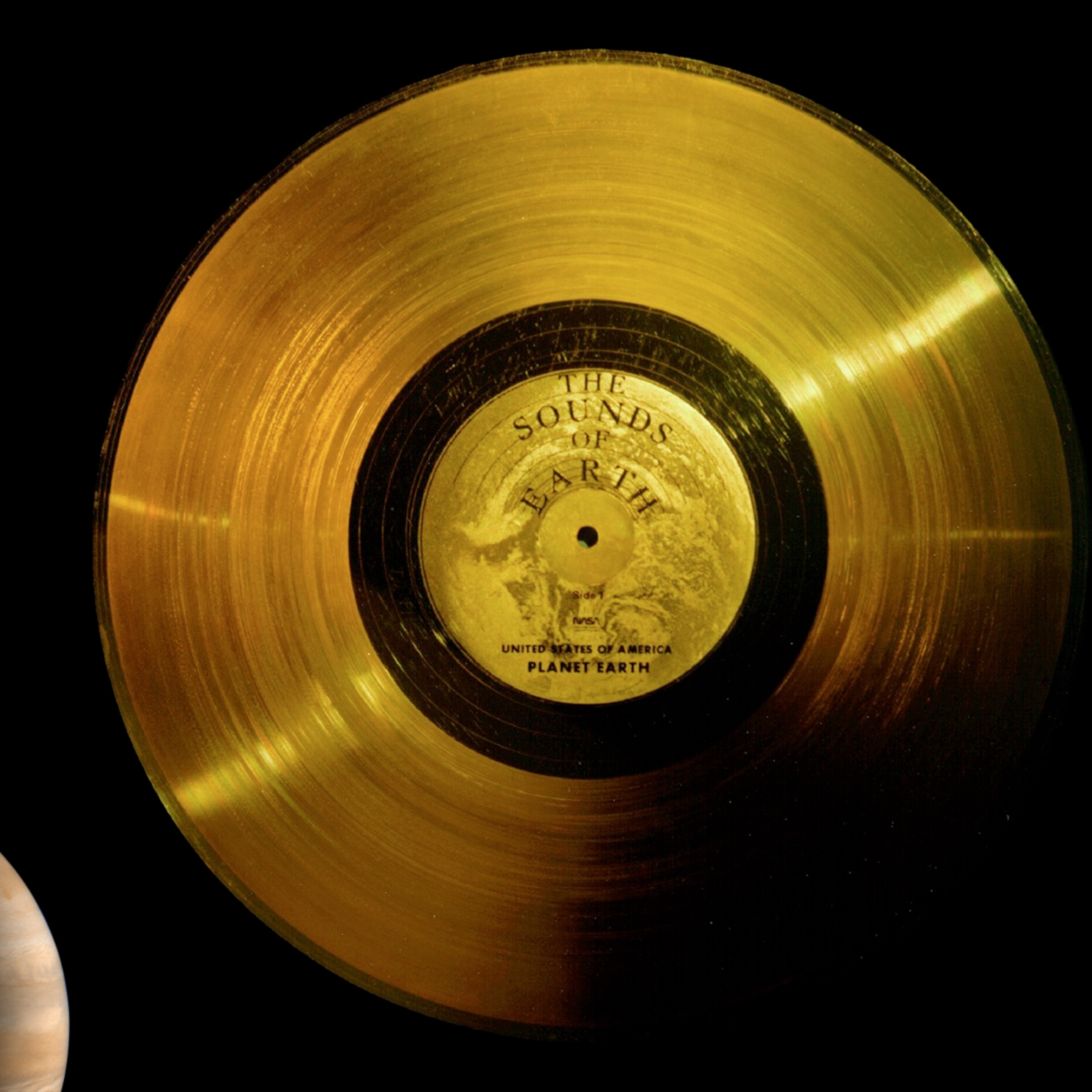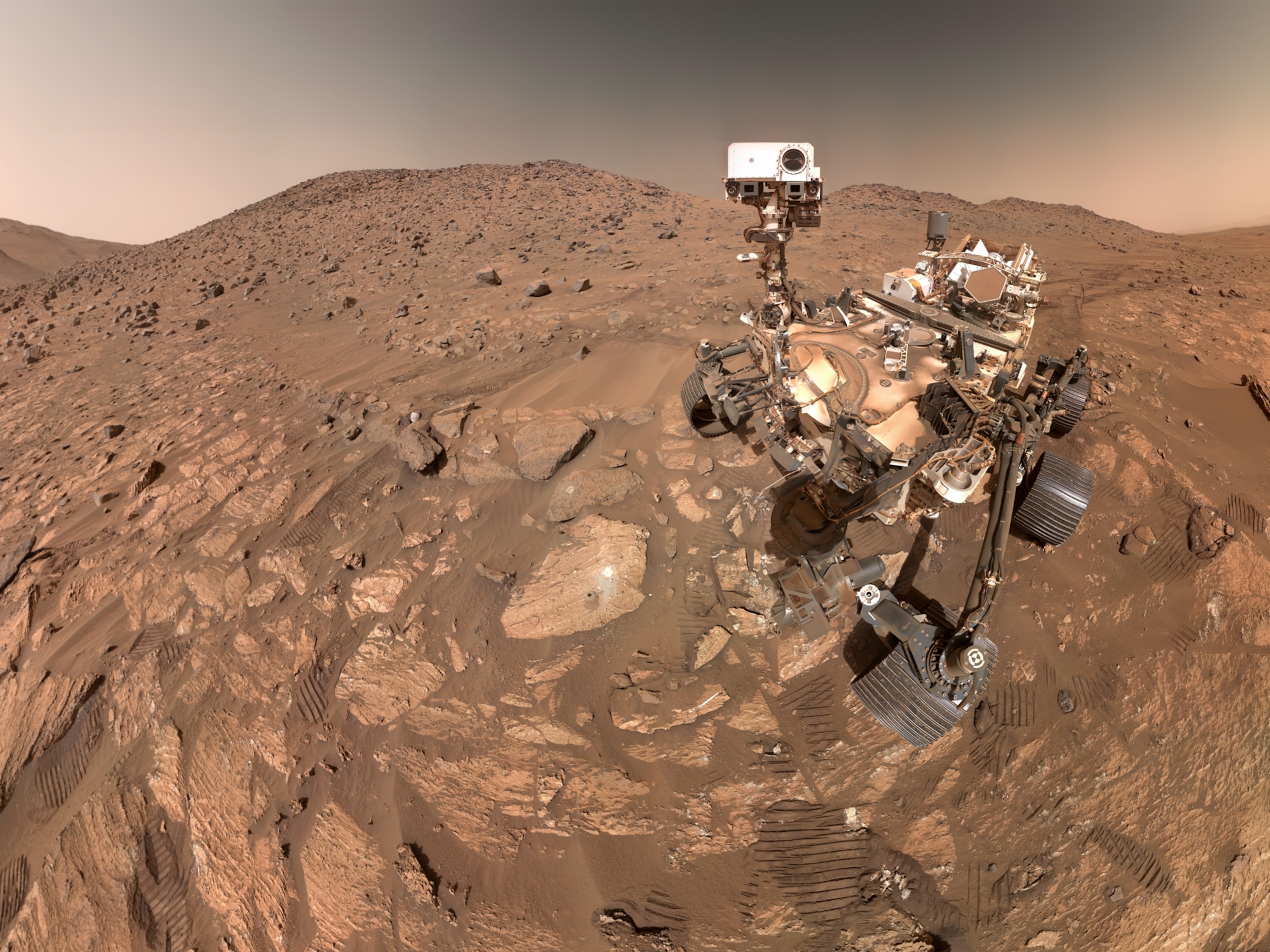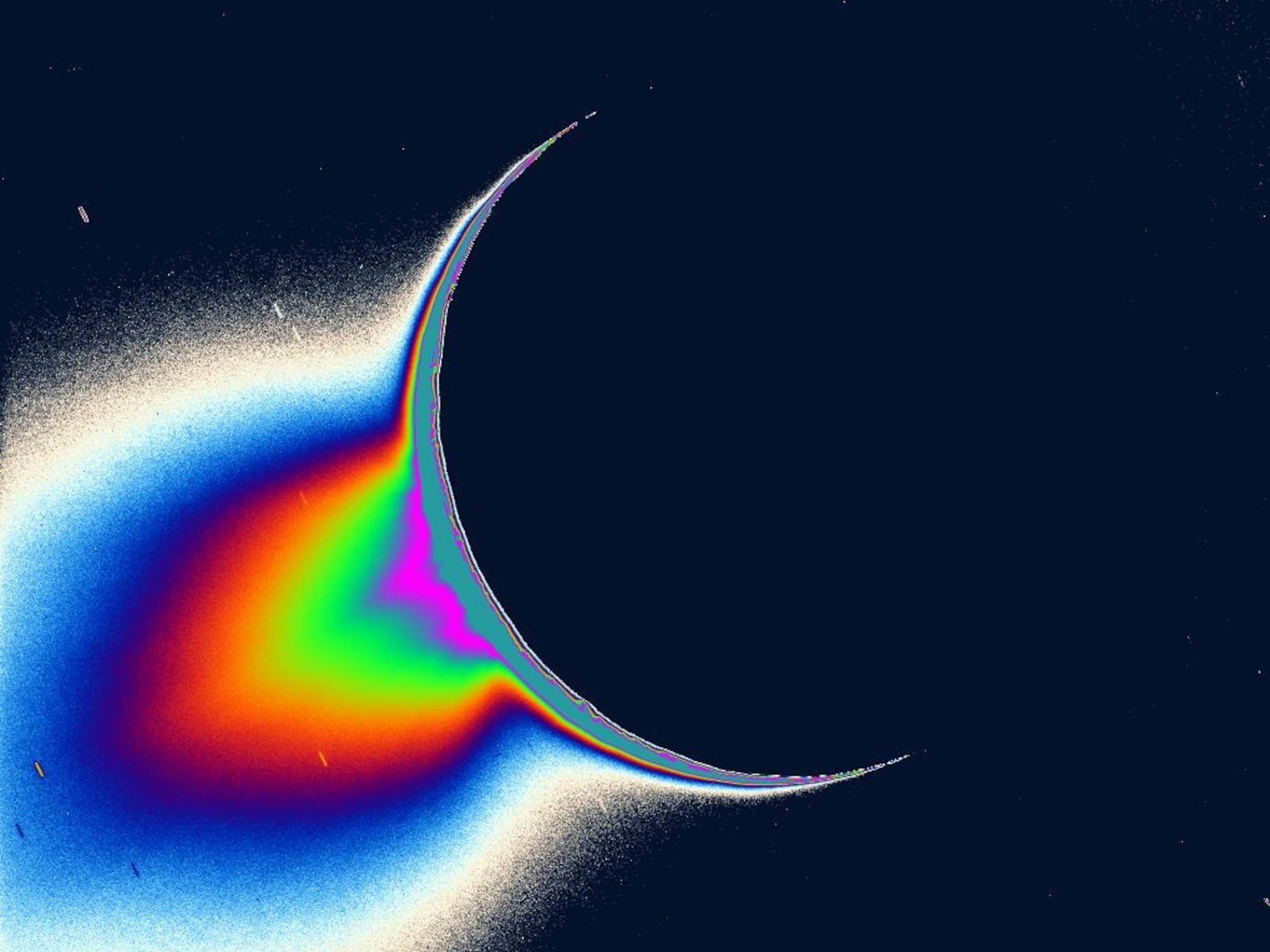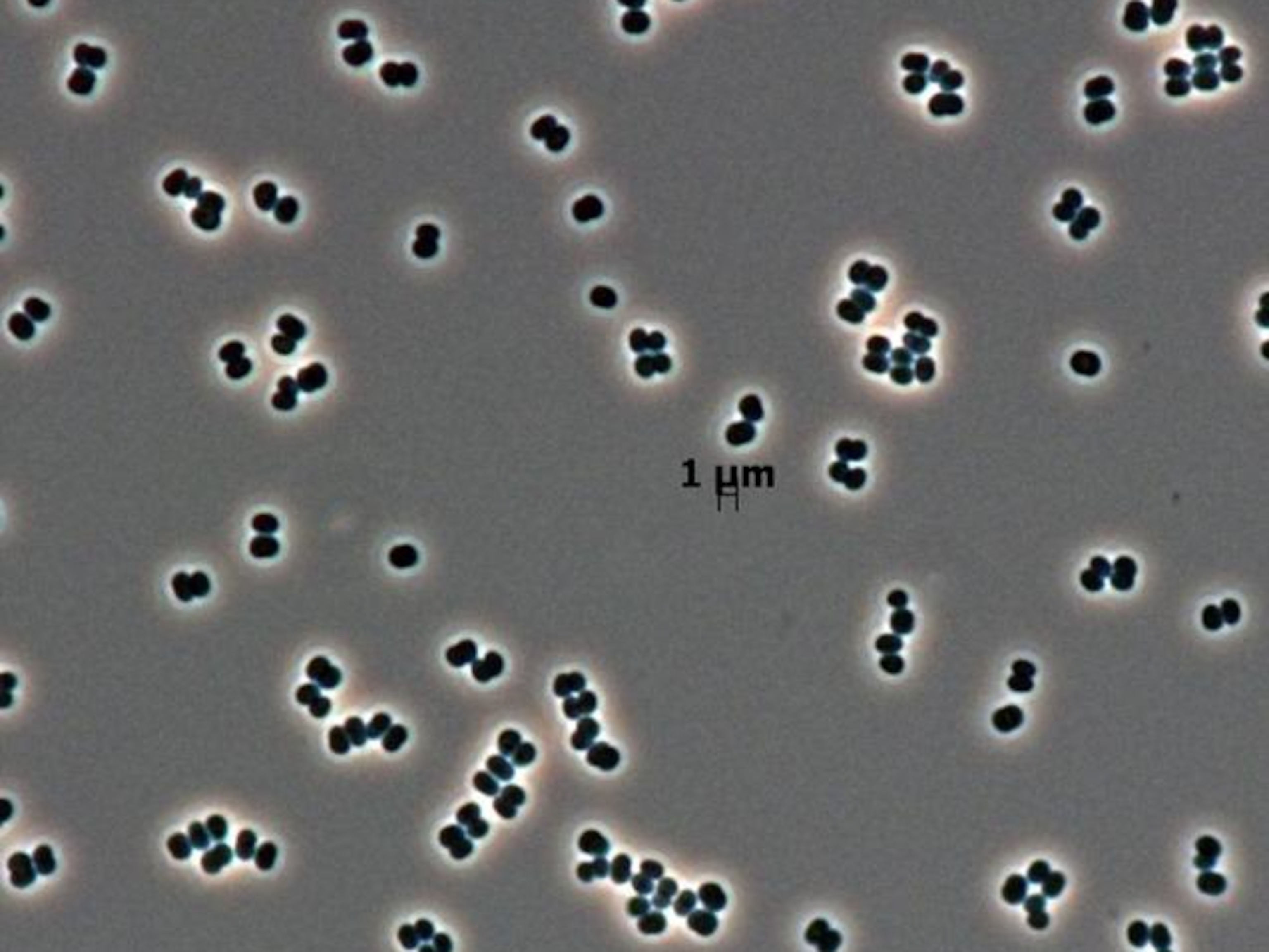Europe's Mars Orbiter Arrives Safely, But Lander May Be Lost
The European Space Agency lost contact with its storm-chasing Schiaparelli lander just a minute prior to touchdown.
Updated October 20, 2016, at 4:45 a.m. ET
Europe has a new satellite around Mars, but an attempted landfall on the red planet seems to have failed.
The ExoMars Trace Gas Orbiter, which will study the Martian atmosphere, is successfully parked above the planet, mission managers announced on October 19. But the European Space Agency lost contact with its Schiaparelli lander just a minute prior to touchdown on Mars, and the agency has not received any radio signals confirming its safe arrival.
Officials fear that the lander, a joint mission by the European and Russian space agencies, might be a repeat of the Beagle 2—Europe’s previous attempt to land a probe on Mars in 2003, which ended in failure. But mission managers are carefully reviewing data from multiple sources, including other Mars orbiters, before declaring the lander's fate.
Schiaparelli's primary mission was to test descent and landing technologies that engineers plan to use to send a rover to the red planet in 2021, and in that sense, ESA mission managers see elements of the lander's performance as a success.
The lander "has entered the atmosphere around Mars and collected all the engineering data from this phase, and that's the most important thing," Andrea Accomazzo, ESA's spacecraft operations manager, said during an October 20 press conference.
The data so far show that the lander's heat shield worked flawlessly, Accomazzo says, and that the parachute deployed to slow the spacecraft's descent also worked—up to a point. Engineers are still trying to figure out whether the spacecraft landed softly but had a communications failure or if it crashed into the surface.
"It is fundamental for a test is to be able to process all the engineering data this unit has collected, and this is something we can do," Accomazzo says. "The data analysis is still ongoing. It will take more time to have a global picture of the full sequence of events on the descent to Martian soil."
Gone With the Winds
If the lander is lost, then it's a painful blow. Aside from testing technology, it would represent a missed opportunity to pursue a secondary task: studying dust storms that pose a potential threat to future expeditions.
“Because the dust particles are so small, they get into everything,” says Michael Smith, a planetary scientist at NASA’s Goddard Space Flight Center. “If you've seen pictures of the rovers, they don't stay clean. You get dust covering their solar panels, and there is a certain minimum amount of power they need just for survival.”
What’s more, dust storms generate electric fields. Scientists are especially eager to measure that energy to find out whether the alien whirlwinds are capable of interfering with communications or frying electronic equipment.
Seasons on Mars are different than those on Earth. That’s because the red planet is tilted slightly more than ours and has a highly elongated orbit. Over the course of the Martian year, the planet’s distance from the sun varies from 128 to 154 million miles.
While small dust devils are common throughout the year, large regional storms occur when the red planet is closest to the sun and is receiving 40 percent more energy—most of which is directed at the southern hemisphere.
As intense sunlight hits the ground, the air closest to the surface gets warm and rises upward. Winds begin to blow, bouncing grains of sand that release very fine particles of dust measuring a few thousandths of an inch wide.
“Once you get that light, fluffy, tiny dust particle going, it takes it much longer to fall out of the atmosphere,” says James Shirley, a planetary scientist at NASA's Jet Propulsion Laboratory.
Since Mars has a thin atmosphere—only around one percent of Earth’s at sea level—the dust-filled winds don’t pack much of a punch. “They're probably not going to be blowing over rockets or impaling astronauts with antennas and things like that,” says Smith, referring to the cinematic cyclone that left astronaut Mark Watney stranded in the film The Martian.
Still, the wind speed can be as high as tens of miles an hour, obscuring vision and otherwise finding ways to gum up the works. “Anything that's mechanical that moves around has joints,” says Smith. “It would have to be sealed up very tightly, because otherwise the dust gets in, and it's not good to have that stuff getting into equipment.”
Dust can also ruin scientific instruments by coating mirrors and lenses. A storm in 2007 knocked out the thermal infrared spectrometers on both the Spirit and Opportunity rovers, removing a part of their toolkits for analyzing the composition of the Martian surface.
Perhaps the greatest concern is when dust coats solar panels. Smith says it was “touch-and-go there for a while” for the Spirit and Opportunity rovers during the 2007 storm, because both spacecraft required functioning heaters powered by solar energy to stay alive. The rovers came through OK, but Smith says if a similar dust storm hit the still operating Opportunity rover today, the aging rover might be much worse for the wear.
Dust to Dust
Occasionally, regional storms on the red planet will merge to create global-scale events.
“Mars has global wind systems that are a lot like ours; jet streams and large scale flow patterns,” says Shirley. “What usually happens is that a storm will start in the southern hemisphere, during the heated summertime. If the dust is lifted high enough, it will be transported by these wind systems to different regions.”
And if there are multiple storms, that haze of dust can spread across the equator, into the northern hemisphere, and potentially surround the entire red planet.
But these global dust storms don’t happen annually—which has left scientists scratching their heads trying to discern a pattern. Nine have occurred since 1924, with the five most recent observed in 1977, 1982, 1994, 2001, and 2007.
Now, Shirley has a promising theory that’s steeped in celestial mechanics. Planets don’t simply revolve around the sun—it’s more accurate to say that the planets and the sun revolve around one another. As they do so, the angle and momentum of the sun and all the planets are being passed around.
“Sometimes Mars will gain momentum due to the sum of all the attractions and the positions and everything that's going on, and other times, Mars has to give that orbital momentum back,” says Shirley. Critically, this exchange of momentum happens in a predictable pattern.
With this in mind, Shirley discovered that global dust storms tend to occur when the momentum of Mars is increasing during the first part of dust storm season. If his theory is correct, then Mars is due for another global storm sometime during the next few weeks or months.
“I would not be at all surprised if a storm begins today,” says Shirley. “I also wouldn't be surprised if it waited until January 15th or even later.”
A Shock to the System
If ESA learns that Schiaparelli has landed safe and sound after all, the lander will spend the next two to eight Martian days performing its duties as a weather station. At this point, a dust storm would be a welcome guest, since the lander is carrying specialized equipment to measure electrical fields, which are generated by dust storms. The lander’s power source is an internal electric battery, so scientists won’t have to worry about the dust covering solar panels.
The electrical phenomenon is known to occur on Earth, but it was first observed on Mars by the Pathfinder mission in the late 1990s. Scientists noticed a big dust load in the atmosphere, even though it wasn’t dust storm season. Soon, however, they spotted the culprit: dust devils.
“Clearly, what happens is grains are mixing around, particularly at the base of the dust devil,” says William Farrell, a physicist at NASA’s Goddard Space Flight Center. “As it turns out, smaller grains tend to get a negative charge, and the heavier grains tend to get a positive charge.”
Like what happens inside a chimney, the vertical winds within the dust devil carry the smaller, negatively charged grains up to high altitudes, while the positively charged grains remain at lower altitudes. “You actually can develop a large-scale electric field within the dust devil,” says Farrell.
It’s possible that electrical charges would also be present in large-scale Martian dust storms, he says, but other conditions on the red planet might mitigate the worst effects.
“The reason why you get lightning in thunderstorms on Earth is that the electrical current greatly exceeds atmospheric dissipation to the point where—ka boom bah!—you just get a big lightning discharge,” he says. Lab simulations, however, suggests that electric current is more likely to achieve equilibrium in a storm that occurs in a thinner atmosphere—thereby avoiding the excess charge.
Farrell says that he and other scientists have been lobbying for 15 years to send instruments to Mars to study these phenomena, making the ExoMars lander all the more exciting for the Mars community worldwide.
“We're really rooting for the Schiaparelli lander to help resolve some of this stuff,” he says.
Victoria Jaggard contributed reporting to this story.








